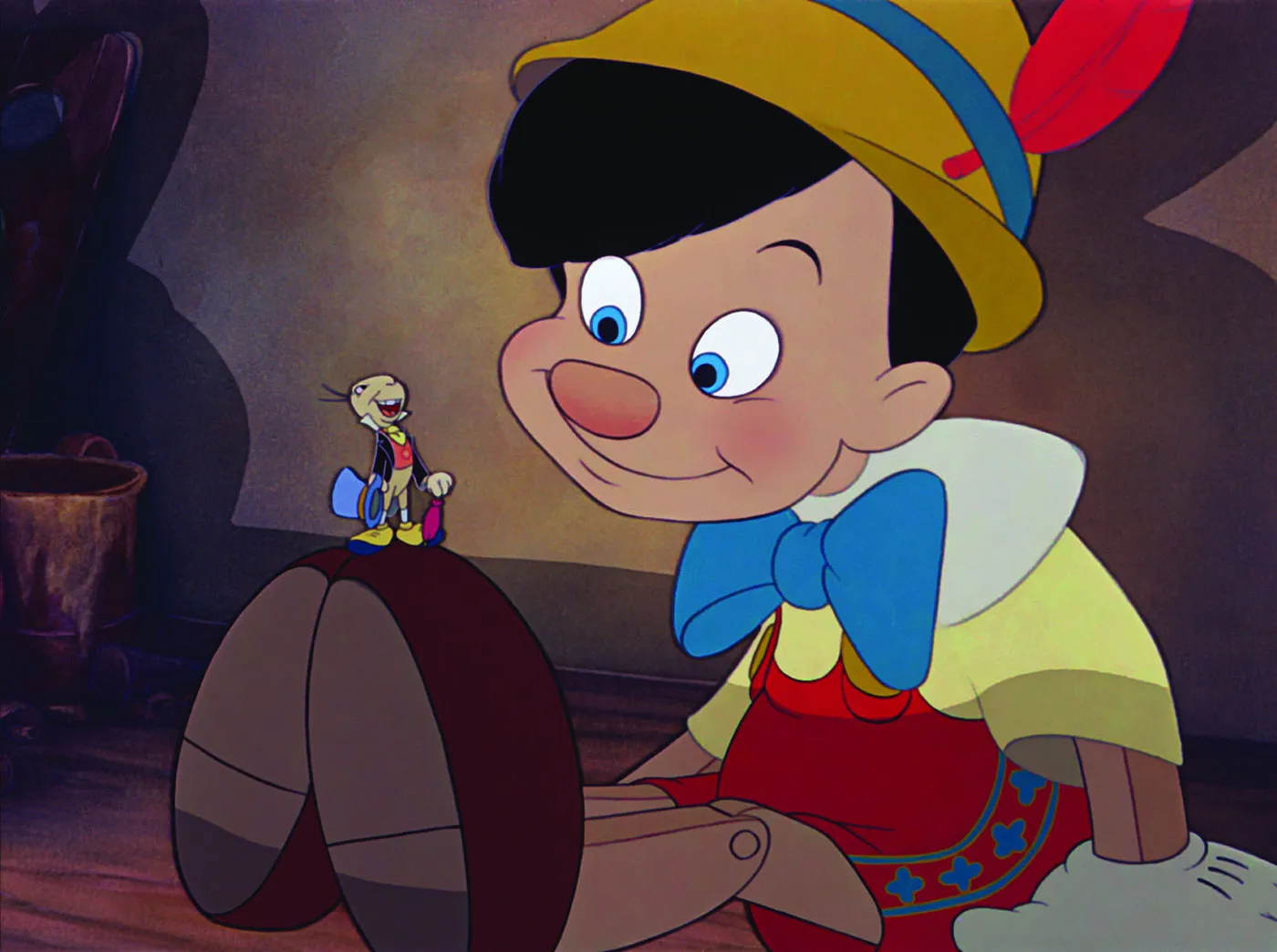mashupch.com – Pinocchio, released by Disney in 1940, is a timeless animated classic that showcases the power of storytelling, animation, and music. Based on the Italian children’s novel The Adventures of Pinocchio by Carlo Collodi, this film marked a significant milestone in the history of animation and cinema. It tells the story of a wooden puppet named Pinocchio who embarks on a transformative journey to become a real boy, but only after learning some difficult life lessons. With unforgettable characters, groundbreaking animation, and themes of personal growth, Pinocchio continues to be one of Disney’s most enduring and beloved films.
The Journey to Pinocchio: The Making of a Classic
When Walt Disney first considered adapting Collodi’s The Adventures of Pinocchio for the screen, the idea was met with some skepticism. Disney had already made waves with Snow White and the Seven Dwarfs (1937), and expectations were high for his next feature. However, the complexities of adapting Collodi’s dark and whimsical tale into an animated feature required extensive work. Pinocchio was not only a visual leap for the studio but also an emotional one.
Assembling the Team
The development of Pinocchio was a monumental task. Disney assembled a team of animators, writers, and musicians to bring the story to life. The film’s production required hundreds of animators, artists, and technical experts working tirelessly for several years. Leading the way was director Hamilton Luske, along with Norman Ferguson and T. Hee. The production saw the use of innovative animation techniques that would later become synonymous with Disney’s brand, setting a high bar for the animation industry.
A New Level of Animation
Pinocchio featured groundbreaking animation techniques, particularly in the use of realistic movement and detailed backgrounds. The film’s visual style incorporated vibrant colors, elaborate set designs, and detailed character animations. Disney’s animators were tasked with creating characters that felt alive, not just through their movements but also by conveying complex emotions.
One of the film’s most innovative elements was the introduction of the multiplane camera, which was first used in Snow White and the Seven Dwarfs. This technology allowed for a greater sense of depth, layering backgrounds and creating the illusion of three-dimensional space. Combined with detailed character animation, this created a truly immersive world for Pinocchio’s journey.
The Music of Pinocchio
Another defining aspect of Pinocchio is its score. The film’s composer, Leigh Harline, along with lyricists Ned Washington and Paul J. Smith, created some of Disney’s most memorable songs. “When You Wish Upon a Star,” perhaps the most iconic Disney song of all time, became an anthem for the studio and a staple of Disney’s identity. The music added an emotional layer to the film, elevating its narrative and drawing viewers deeper into Pinocchio’s world.
The Story: Pinocchio’s Transformation from Puppet to Boy
The plot of Pinocchio follows the journey of a wooden puppet named Pinocchio who is brought to life by the Blue Fairy. Although he is given the ability to move and speak, he is still far from being a real boy. Pinocchio’s creator, the kind but lonely woodcarver Geppetto, wishes for his puppet to become a real boy, but Pinocchio must prove himself worthy of that transformation by learning about honesty, responsibility, and courage.
Pinocchio: A Wooden Boy with a Big Heart
Pinocchio is full of childlike innocence, curiosity, and mischief. He is not inherently bad but lacks the wisdom and understanding necessary to make good decisions. Throughout the film, his adventures reflect the struggle between temptation and the need to do what is right. His journey is one of growth, where he must learn the value of honesty, self-discipline, and caring for others.
Pinocchio’s most notable feature is his nose, which grows whenever he tells a lie. This magical element serves as both a symbol and a consequence of his moral failures, emphasizing the importance of truthfulness. Pinocchio’s mistakes, however, are balanced by his desire to be good, which makes him a relatable and endearing character for audiences of all ages.
Geppetto: The Loving Father Figure
Geppetto, Pinocchio’s creator and father figure, plays an important role in the story. His deep love and care for Pinocchio, despite the puppet’s mischief, showcase the parental bond that transcends even the limitations of being made of wood. Geppetto’s unwavering belief that his puppet could become a real boy embodies the themes of hope and redemption that are central to the film.
Geppetto’s journey is also one of sacrifice. In his attempt to find Pinocchio after the puppet gets lost, Geppetto braves the dangers of the sea, further exemplifying the selflessness and devotion that define fatherhood. His emotional bond with Pinocchio is one of the film’s most touching elements.
Pinocchio’s Companions: Characters of Influence
Throughout his journey, Pinocchio encounters a variety of characters who guide, tempt, and challenge him, each of them playing a crucial role in his transformation.
Jiminy Cricket: Pinocchio’s Conscience
Jiminy Cricket, voiced by Cliff Edwards, serves as Pinocchio’s conscience and guide throughout the film. He encourages Pinocchio to make good choices, teaching him the importance of doing what is right. Jiminy acts as both a moral compass and a companion to Pinocchio, and his whimsical songs, such as “Give a Little Whistle,” became unforgettable elements of the film.
The Villains: Stromboli and Honest John
On the darker side of Pinocchio’s journey, there are characters who lead him astray. Stromboli, the greedy puppet master, represents the exploitation of innocence. He tricks Pinocchio into performing in his puppet show and locks him away for his own profit. Honest John, the sly fox, deceives Pinocchio into joining a bad crowd, including the notorious Pleasure Island.
These antagonists are not just villains in the traditional sense; they embody the temptations and vices that threaten to pull Pinocchio away from his true goal of becoming a real boy. Their actions push Pinocchio toward growth, forcing him to learn through hardship.
Themes of Morality and Transformation
At its core, Pinocchio is a story about moral development. The film teaches valuable life lessons, including the importance of honesty, responsibility, and bravery. Pinocchio’s transformation from a mischievous puppet to a real boy serves as a metaphor for personal growth—a journey that involves making mistakes, learning from them, and ultimately choosing the right path.
The Power of Wishes
The film’s central motif is the theme of wishes. Pinocchio, Geppetto, and even Jiminy Cricket all have wishes for a better life. Pinocchio’s ultimate wish is to become a real boy, a dream he can only achieve by proving himself. The magic of the Blue Fairy reflects the idea that dreams can come true, but only through hard work, honesty, and kindness. The film’s message resonates with audiences, showing that transformation is possible, but it requires inner growth.
The Consequences of Lies and Bad Choices
The recurring theme of truthfulness is integral to Pinocchio’s character development. His nose grows each time he lies, emphasizing the moral lesson that dishonesty brings tangible consequences. The film reflects the idea that making bad choices can lead to trouble, but owning up to one’s mistakes and making things right is a step toward redemption.
The Legacy of Pinocchio
Since its release, Pinocchio has had a profound impact on both the animation industry and popular culture. Though it initially struggled at the box office, the film’s reputation grew over time, eventually becoming one of Disney’s most beloved classics. Pinocchio’s themes, characters, and groundbreaking animation techniques laid the groundwork for future Disney films and solidified the studio’s place as a leader in animation.
The Iconic “When You Wish Upon a Star”
The song “When You Wish Upon a Star” has become synonymous with Disney, representing the hope and possibility inherent in every Disney film. Its emotional resonance has made it an anthem for generations of Disney fans, and it continues to be a key part of the Disney legacy.
Influence on Future Animation
Pinocchio’s innovative animation and storytelling set the stage for future Disney films, influencing works such as Cinderella (1950), Peter Pan (1953), and beyond. Its influence is seen not only in Disney’s animation but also in the broader field of animated storytelling, as it showed how animation could be used to convey complex emotional experiences.
Conclusion
Pinocchio (1940) is more than just a children’s film; it is a profound story of growth, morality, and transformation. Through its groundbreaking animation, memorable characters, and timeless messages, it continues to inspire audiences around the world. The story of a wooden puppet striving to become a real boy is as relevant today as it was when the film was first released, making Pinocchio a true Disney classic with an enduring legacy.


